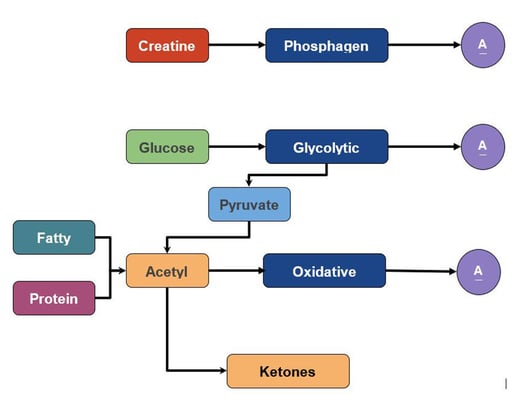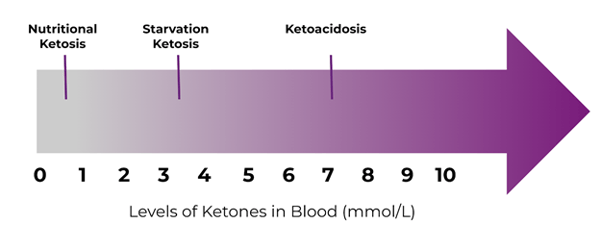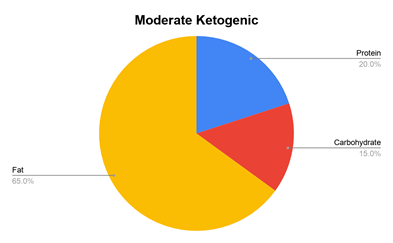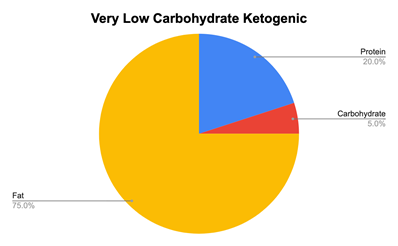Over the last several decades, we have seen a rise in the popularity of low-carbohydrate diets. These diets have ranged from just low-carb diets to ketogenic diets to even zero carb diets (e.g., The Carnivore Diet).
These dietary approaches have become popular due to their effectiveness in inducing rapid weight loss due to substantial changes in eating habits and rapid water weight loss that occurs with severe carbohydrate restriction.
Despite the rise in popularity, very few people understand these diets. There are several key questions people should ask themselves if they are going to follow a ketogenic diet, such as:
● What is a Ketogenic Diet?
● The Three Energy Systems
● Are Ketogenic Diets Better for Weight Loss Than Other Diets?
● How do I Follow a Ketogenic Diet?
● Foods and Recipes for Keto Diet
This article will cover the fundamental science behind a ketogenic diet, how to follow it, and how to view ketogenic diets in the broader dietary landscape.
***If you are interested in learning more about navigating the large, often-confusing world of diets, check out the NASM Nutrition Certification and other nutrition courses like it.
What is a Ketogenic Diet?
A ketogenic diet is any diet that causes your body to enter a state of ketosis. Ketosis occurs when your body starts relying heavily on oxidative metabolism and produces acetyl-CoA. Eventually the body converts the acetyl-CoA into "ketones", which complete the "ketogenesis" process in the liver. A ketogenic diet taps into this process for weight loss.
To wrap our minds a little further around this definition, let's reverse engineer the ketogenic diet by take a short trip into Biochemistry Town. Don’t worry, it isn’t a difficult journey, but it is an important one.
The Three energy systems and the keto diet
Your body has three main ways of producing energy in the form of ATP. These three ways are known as the energy systems and go by the following names:
1) The Phosphagen System
2) The Glycolytic System
3) The Oxidative System
The details of these are not super important, just the high level few.
The Phosphagen System
The phosphagen system provides energy for a very short duration, very fast activity. Think like ~10 seconds of maximal effort work. After that, your phosphagen system is pretty toast until it recovers.
The primary fuel source for this system is creatine phosphate, which your body naturally produces, and which you can increase stores by taking creatine supplements.
See also: What Does Creatine Do
The Glycolytic System
The glycolytic system provides energy for short-to-moderate duration exercise and for ~20-50% of your body's resting metabolic needs. The glycolytic system uses glucose (a form of carbohydrate) to make ATP.
The glucose used in glycolysis can have two fates. First, it can get turned into lactate and exported out of your muscle cells and into your blood. It can also continue into the oxidative system by turning into a molecule called acetyl-CoA and then going through the Kreb's Cycle.
Oxidative System
Lastly, we have the oxidative system. This system can utilize carbohydrates (as discussed above), fatty acids, or protein to produce energy. It does so by the body converting them into acetyl-CoA first.
recap of this section
- Your body makes energy in three ways. One way, the oxidative system, utilizes a molecule called acetyl-CoA to do a lot of the work. That is the "starter" to oxidative metabolism.
- When your body starts relying very heavily on oxidative metabolism, you start producing a lot of acetyl-CoA. When you start relying on it very heavily, you begin to accumulate acetyl-CoA.
- At some point, your body starts turning those into a different molecule called ketone bodies, which we colloquially call "ketones." This process of turning things like fatty acids into ketone bodies is called "ketogenesis," and interestingly only occurs in the liver.
- These ketone bodies then get packaged up by your liver and sent out into the bloodstream, where the rest of your body can use them for fuel. When your body is in a state of producing ketone bodies above a certain level, and they begin to show up in meaningful amounts in your bloodstream, we call this a state of "ketosis."

the different uses of the keto diet
We can return from Biochemistry Town and return to the real world and explore a few things about the ketogenic diet.
The first place to start is to go back in time a bit.
Keto diet for brain disorders
The brain's metabolism is slightly different from the rest of the body in that it relies much more heavily on glucose metabolism than the rest of the body. While skeletal muscle depends quite heavily on fatty acid at rest, the brain depends quite heavily on glucose metabolism.
This difference in metabolism has made brain disorders a target of ketogenic diets.
The ketogenic diet was initially used in medicine as a potential therapeutic approach for people, specifically children, with incurable epilepsy. High levels of ketones in the blood can slightly alter metabolism in the brain.
This has been marginally effective for these people, but it requires very high-fat diets (90% or higher) and very low protein and carbohydrates, and long term adherence (> 3 months) for it to be effective.
The adherence to these lacks in the long-term. It often comes with a long list of side effects such as dehydration, hypoglycemia, lethargy, metabolic acidosis, gastrointestinal symptoms, high levels of low-density lipoprotein, and elevated total cholesterol.
KEtogenic diet for weight loss
I used the previous example to contrast with what we see with the ketogenic diet in the real world. Generally, in the real world, we see ketogenic diets used as a tool for weight loss.
These diets are often not similar to the diets used for medical purposes. The "regular" ketogenic diet often looks like a diet that has moderate protein (10-20% of total calories), higher fat (50-70% of calories), and lower carbohydrate (10-30% carbohydrate).
These diets often put people into a state which is called "nutritional ketosis." In this state, blood levels of ketones are elevated slightly, to around 0.5 mmol/L. This level is much lower than starvation ketosis, which occurs due to long periods of minimal to no calorie intake, which increases blood ketones to ~3-4 mmol/L.
Nutritional ketosis is also not similar to ketoacidosis, a much different medical phenomenon where blood ketones can reach >7 mmol/L.

(Image c/o NutriWiki by Macros Inc)
Is the Ketogenic Diet more effective for weight loss?
Meta-analyses have shown that ketogenic diets can be useful for weight loss. However, compared head-to-head with other diets, the ketogenic diet does not appear to be more beneficial for weight loss or fat loss. So it is not the only diet that should be considered.
Although it is not superior to other diets for weight loss, a few aspects of a ketogenic diet may provide benefits for some people.
For example, there is some evidence that being in a state of ketosis may slightly suppress appetite and allow people better control over their appetite. Exactly why this occurs is not well understood but may result from the ketones themselves or a massive change in dietary composition that promotes a greater feeling of satiety.
Losing Glycogen and Water May Lead to Phantom Weight Loss
One of the most prominent features of a ketogenic diet is a rapid drop in water weight with a ketogenic diet. Reducing carbohydrate intake can lower muscle glycogen to ~50% in as little as a few days, depending on your physical activity level.
As glycogen also stores water, your body will see a large drop in body water in the first few weeks, which also translates into a decrease in scale weight, but not necessarily a reduction in body fat.
How to Follow a Ketogenic Diet
There has been a lot of speculation on exactly what a person needs to follow a ketogenic diet.
Thankfully, we can examine an extensive literature base to determine what type of diet one would need to follow to be in a state of "nutritional ketosis."
If you are a nutrition specialist and have clients wanting to follow a keto diet, this information can serve as a refresher for dieting guidance.
Calories and Carbohydrate Consumption
The two most important things to consider when setting up a ketogenic diet is the overall caloric intake and the total carbohydrate consumption.
Suppose you are in a caloric deficit or mild caloric surplus.
In that case, you can achieve a ketogenic diet by limiting your carbohydrates to below 80 grams a day, with a target of below 50 grams a day being the most effective way of ensuring you are in a state of ketosis.
Protein Considerations for Nutritional Ketosis
There has been some speculation that higher dietary protein intake may prevent nutritional ketosis, but the literature does not support this. However, when you examine the data across all studies examining protein intake and blood ketone levels, there is no strong correlation. It appears as those dietary protein does not substantially affect blood ketone levels.
One can also increase blood ketone levels through the use of supplementation. For example, one can consume exogenous ketones or high amounts of medium-chain triglycerides to increase blood ketone levels to a state of nutritional ketosis.
Two Approaches to Following Keto Diet
There are two primary approaches to following a ketogenic diet. The first approach is a more moderate approach that utilizes a moderate protein intake (~20% of total calories), moderate carbohydrate intake (~15% of total calories), and a high fat intake (~65% of total calories).
The second approach is a very low carbohydrate approach that utilizes a moderate protein intake (~20% of total calories), a very low carbohydrate intake (~5% of total calories), and a very high fat intake (~75% of total calories).


What Foods are Ketogenic?
One of the most common questions surrounding ketogenic diets is, "what foods are ketogenic"? The answer to this question is that there are not ketogenic foods or non-ketogenic foods.
The totality of your diet will dictate whether or not you are in a ketogenic state. Instead of looking for specific ketogenic foods, look at each food in the context of your overall intake, and decide if that food is in line with the overall objective.
What Does Eating a Ketogenic Diet Look Like?
Constructing a ketogenic diet for yourself should accomplish several major goals: 1) consuming the correct amount of calories you need, 2) ensuring you achieve all the micronutrients you need, and 3) that it results in a state of ketosis.
Here is a sample day of eating that would be within the framework of a ketogenic diet.
Breakfast
● 3 eggs, scrambled, cooked in coconut oil
● ½ onion chopped
● 1 bell pepper chopped
● 1 cup black coffee
Snack
● 1 oz almonds
● 1 oz cheese
● 1 cup carrots
Lunch
● 3 oz salmon
● 2 cups spinach
● 1 oz goat cheese
● 1 tbsp vinaigrette dressing
Snack
● ½ apple
● 3 oz beef jerky
Dinner
● 5 oz ribeye steak
● 2 cups grilled vegetables
● ¼ cup sautéed mushrooms
Summary
Like most other diets, the ketogenic diet is simply one dietary tool used for weight loss or other uses (e.g., intractable epilepsy) for people who enjoy the diet and can adhere to it.
Unfortunately, it does not hold mysterious, phantasmagorical weight loss properties and is not more effective for weight loss than other tools, but can be used to significant effect in the right circumstances.
For more on the nutritional makeup of low carb alternatives for dieting, see this blog post on low carb/high protein diets.
















